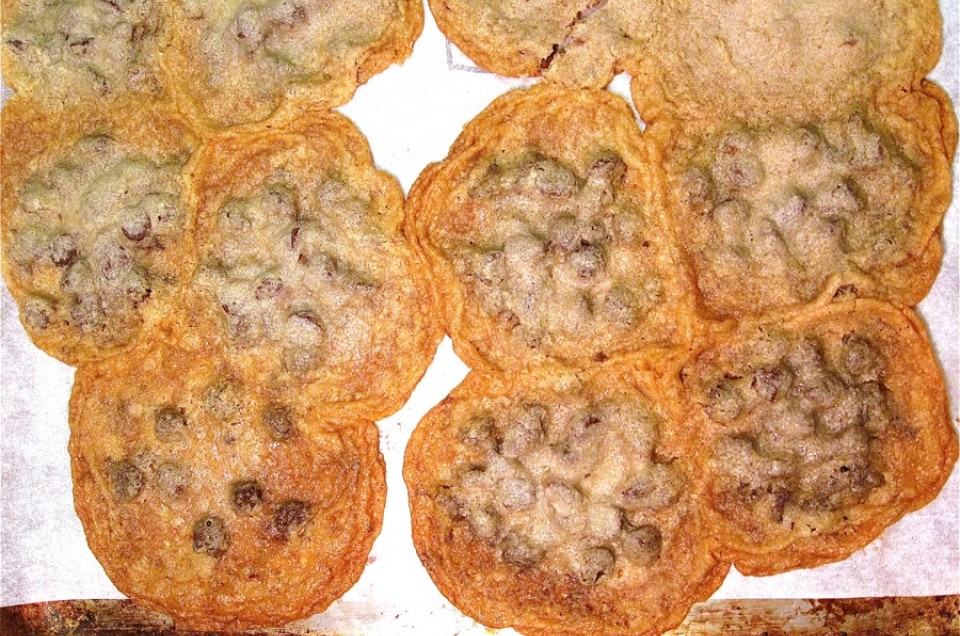


Why oh why oh WHY did my beautiful sheet of chocolate chip cookies turn into a big, ugly blob as they baked?
Well, there are several reasons cookies spread.
A touch too much sugar, for one – sugar is hygroscopic; it absorbs liquid. When you're preparing your dough, it may LOOK just fine (as the sugar is holding onto the liquid); but once it bakes, and the sugar releases that liquid it had been hoarding, watch out for those puddles!
Another less common reason is scooping cookie dough onto a hot baking sheet, or one that's overly greased. The dough hits the hot/slick surface, and starts to spread immediately; the additional, planned-for spread in the oven is exacerbated by this head start.
Frank, our veteran chef and test kitchen baker, recently sent me photos from an experiment on cookie spread he'd just conducted.
Says Frank, "We're working on different aspects of cookie baking, and thought you might enjoy these test results. The primary difference between these two trays [photos below] is the baking temperature.
"The failed tray baked at 350°F for 14 minutes.
"For this practically perfect tray, we dropped the temperature to 300°F, and extended the baking time: 22 minutes for chewy, 30 minutes for crisp.
"This is a good example of showing temperature as ingredient."
Because the fat in cookies is a big part of their structure, prior to baking. Scoop the dough onto the baking sheet, and the fat is at least partially responsible for them holding their shape.
Once those cookies hit the oven, though, the fat starts to soften and melt. And the hotter the oven, the more quickly it melts. If the oven's hot enough, the fat melts before the cookies set. And since their flour/liquid matrix hasn't yet had a chance to harden, the cookies spread – becoming those dreaded cookie blobs.
This also might be one answer to a common question we hear on our baker's hotline: “Grandma gave me the recipe herself; why don’t my cookies look like hers?”
The quirkiness of different ovens, especially those from different generations of bakers, notes Frank, is "one of the many dangers of believing that a handwritten heirloom recipe must be correct."
Do you have a favorite cookie recipe that spreads too much? Try lowering the temperature, and baking the cookies longer; this trick just may give you the perfect treat you're after.
Want more tips and tricks for cookie baking? See all of our cookie skills blog posts.



